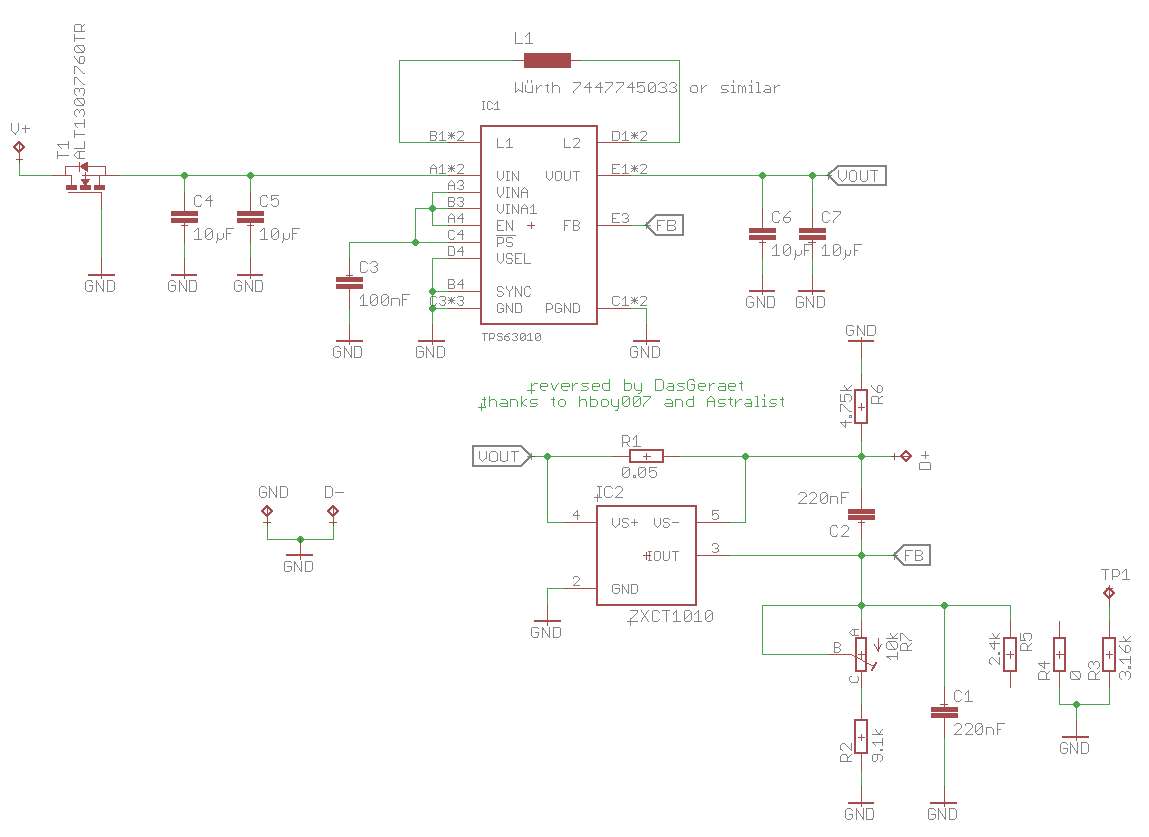Hi guys,
Im interested in an efficient (so not linear) driver which can be current output adjusted via an external voltage (from a buffered DAC).
In my device, the power is supplied by 2 parallel 10440 cells, so 3,7V in. I want to drive an Oclaro HL63193MG, so voltage around 2.6V and current should be adjustable between 250mA - 1.2 A (or more?). Probably, a buck/boost driver is needed.
Do you know if there is a driver out there which can be used here (or which can be modded)?
I am experienced in soldering small SMD components, so I'm not scared of changing existing drivers.
I hope you can help me
Best regards,
Nikolas
Im interested in an efficient (so not linear) driver which can be current output adjusted via an external voltage (from a buffered DAC).
In my device, the power is supplied by 2 parallel 10440 cells, so 3,7V in. I want to drive an Oclaro HL63193MG, so voltage around 2.6V and current should be adjustable between 250mA - 1.2 A (or more?). Probably, a buck/boost driver is needed.
Do you know if there is a driver out there which can be used here (or which can be modded)?
I am experienced in soldering small SMD components, so I'm not scared of changing existing drivers.
I hope you can help me
Best regards,
Nikolas
Last edited:







